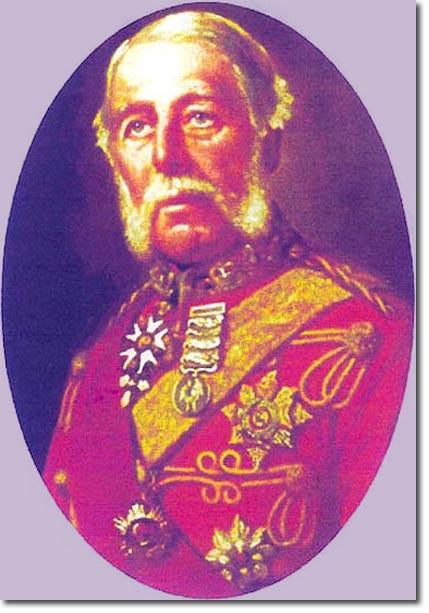|
|

 |
|
1803 Born April, in Newcastle Upon Tyne 1821 Ensign in 34th Foot, 15th Mar. 1823 Lieutenant, 4th Dec. 1825 Captain, 22nd Oct. 1834 Major by purchase, 9th May 1838 Lt-Col and CO of 34th in Canada, 10th Feb. 1847 Left the regiment to Horse Guards as DAG 1851 Brevet Colonel 11th Nov. 1854 Quartermaster-General in Crimea, and until 1865 1854 Major General, 12th Dec. 1856 Awarded GCB 1860 Colonel of 17th Foot, 20th July 1862 Lieut-General, 24th Oct. 1865 Governor of Gibraltar 21st Sep - 25th Jul 1870 1868 Colonel of 7th Foot, 1st May 1870 Adjutant General, 1st Oct, until 31st Oct 1876 1871 General, 9th April 1876 Awarded KCB 1879 Airey Commission on Army Reform 1881 Died, 14th Sept at the home of Lord Wolseley in Leatherhead Richard Airey became famous at the Battle of Balaclava when he wrote the infamous note, at Lord Raglan's dictation, and handed it to Lewis Nolan to order the Light Brigade to charge the Russian guns. He was castigated for his choice of messenger. He was also held responsible for the inadequate supply of provisions and clothing to the troops during the terrible Crimean winter of 1854-5. But he had only reluctantly accepted the post of QM General whilst on campaign in the Crimea and was not involved in the preparations. Whilst he was Commanding Officer of the 34th in Canada he took charge of a large area of land bequeathed to him. He took time off from his regimental duties to live the simple life of a pioneer settler and learned to adapt to harsh conditions. As CO of the regiment he also instigated the practice of providing an evening meal to his men. This was frowned upon by many officers as, up until then, it was regarded as acceptable that soldiers ate no food from lunchtime until breakfast the following day. He also brought in regimental canteens which became the norm throughout the army. Airey's father, Sir George had reached the rank of Lieut-General. He had two brothers and two sisters. One of his brothers was also a staff officer. Richard married Harriet Talbot and had 5 children. He died at the Grange, Leatherhead, 6 weeks after the death of his wife. |
Commanding Officers | Regimental details
Armed Forces | Art and Culture | Articles | Biographies | Colonies | Discussion | Glossary | Home | Library | Links | Map Room | Sources and Media | Science and Technology | Search | Student Zone | Timelines | TV & Film | Wargames